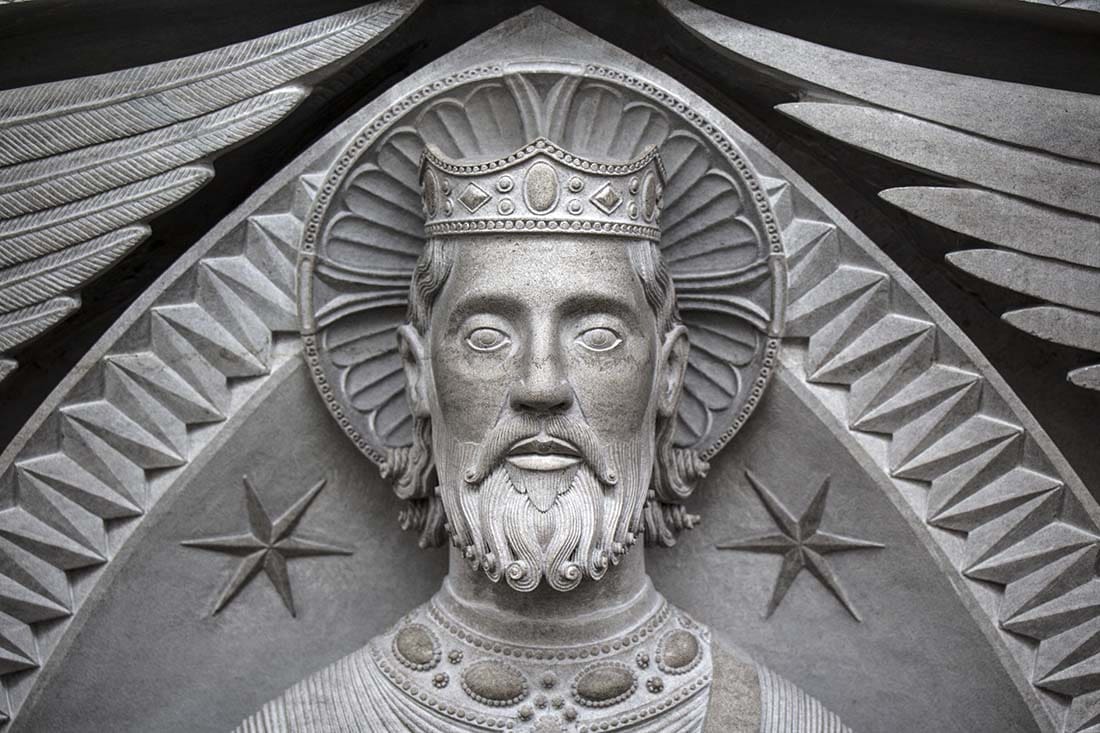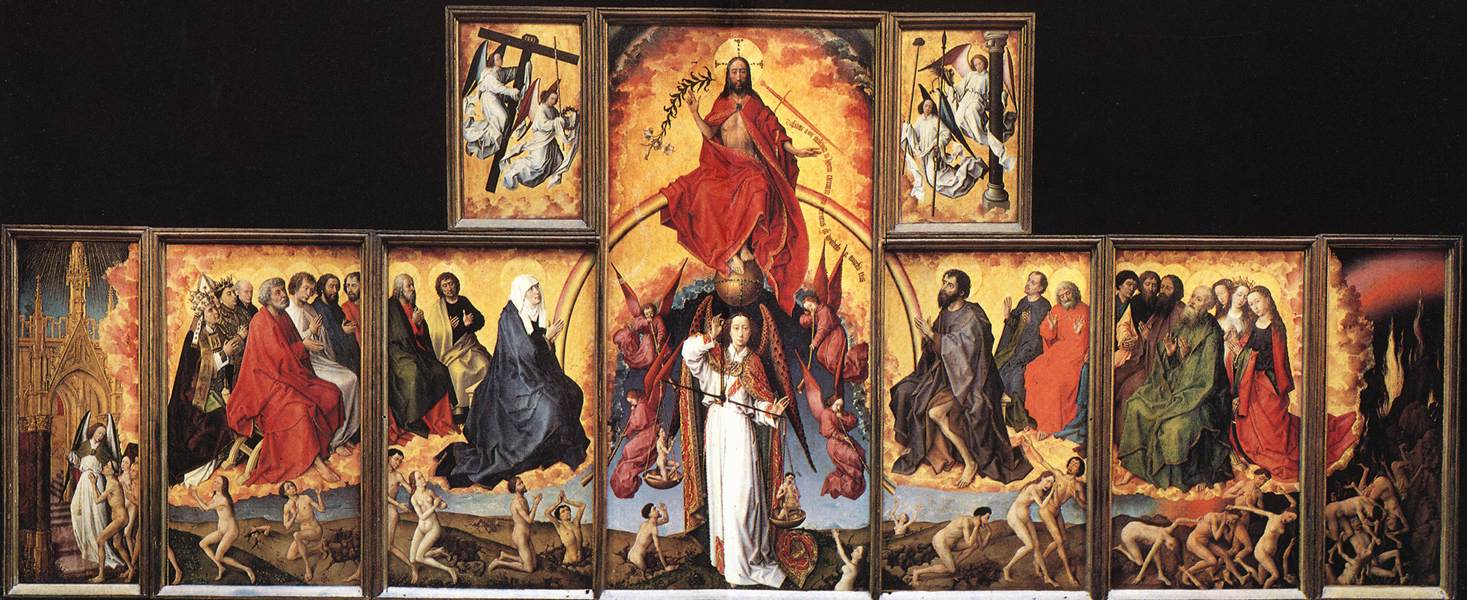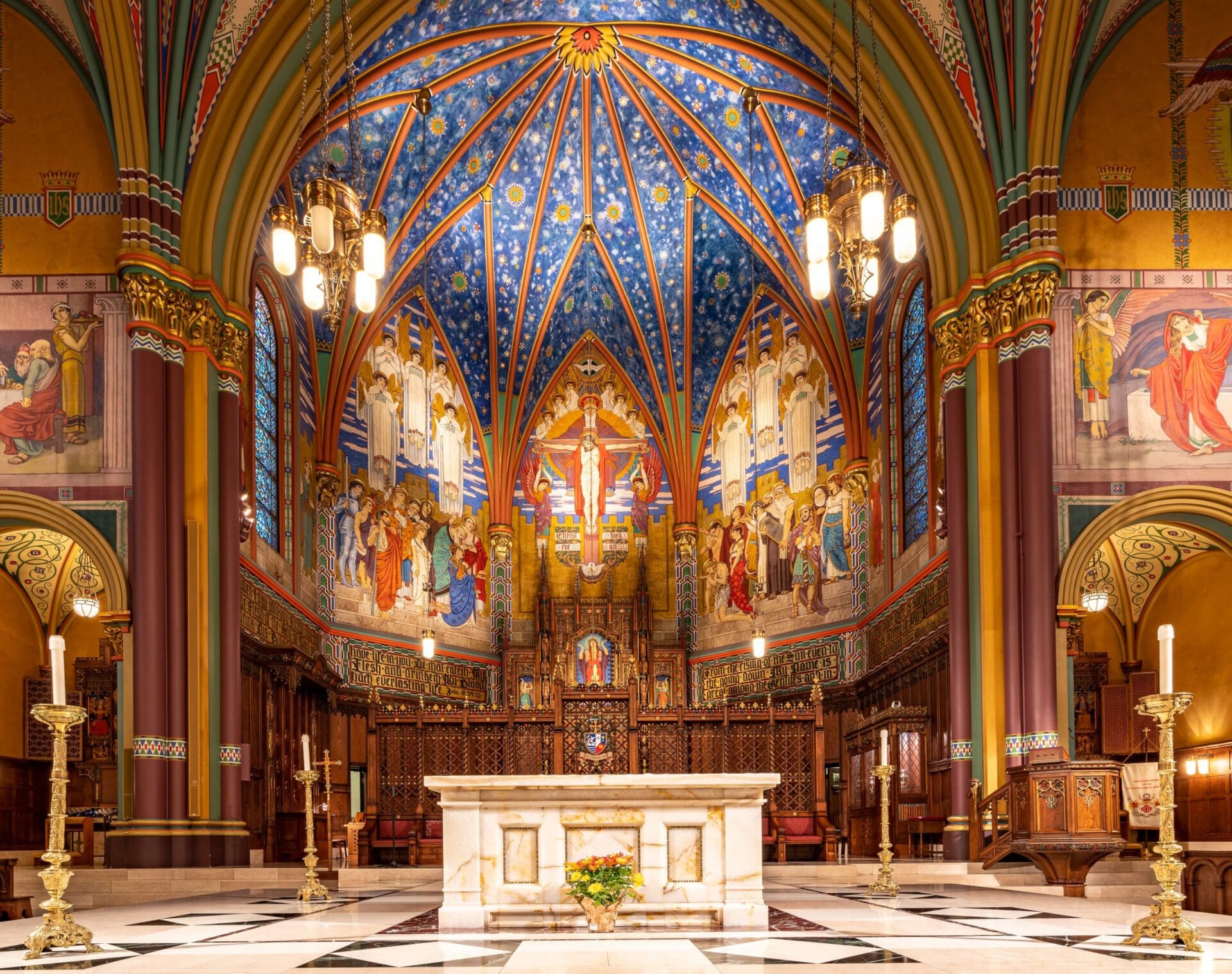I did once say that to me art and the saints are the greatest apologetic for our faith.1 – Pope Benedict XVI
One of the recommendations of Vatican II was that priests be formed in the arts: “During their philosophical and theological studies, clerics are to be taught about the history and development of sacred art, and about the sound principles governing the production of its works. In consequence they will be able to appreciate and preserve the Church’s venerable monuments, and be in a position to aid, by good advice, artists who are engaged in producing works of art.”2
This is not a bad idea, considering that priests are the caretakers of the Church’s artistic patrimony. Each pastor is ostensibly the curator of a small art gallery as well as the overseer of a physical plant that needs constant maintenance, repair, and additions. Then there are the lucky few, or perhaps not, who have the opportunity to build anew. Building a church is a grand undertaking that includes thousands of decisions — from hiring the right architect to raising millions of dollars to critiquing the statue of the Blessed Virgin to deciding whether the door hardware should be bronze or polished brass. And it all has to be done in addition to the full-time job of running the parish.
Given that many pastors have to be shepherd, curator, head of the physical plant, chairman of the music and education programs, and chief development officer, does it make sense that they should have some training in art and architecture? If it could be fit in — and seminary education is packed as it is — what would it look like?
An introduction to Catholic art and architecture should include three broad topics: the history of sacred art and architecture, the architectural design process, and the process of construction. A history of sacred architecture is hard to cover in one semester (think eighteen centuries of material across many countries) and the necessary inclusion of art makes it even more difficult. Yet if seminarians could study a few of the great monuments produced by the Catholic faith, it would be inspirational as well as eye-opening. Not all priests will be experts in the philosophy of Saint Thomas Aquinas or the theology of Saint Augustine, yet it is important that they have read them and have a familiarity with these giants of the faith. So with knowledge of sacred art and architecture.
What do future priests need to know?
– To understand the distinctiveness of different periods and styles while at the same time studying their development and continuity with the past. We see this in the development from early Christian architecture to the Romanesque and then to the Gothic. The Renaissance church plan and bay module develops ideas begun with the Gothic.
– To be familiar with some of the great patrons and their architects — including Constantine, Bishop Suger, the Medicis, and Pope Julius II up through Archbishops Carroll, Hughes, and Ireland in the United States. These men set the standard for us today, and their buildings continue to inspire.
– To inculcate in future priests a love of the great tradition of sacred architecture. This means valuing not just the churches they grew up with but also the early Christian basilica, the Byzantine dome, the Gothic cathedral, and the exuberance of the Baroque. There is not one Catholic style nor is there one formula for creating a beautiful church. Rather there are timeless principles of sacred architecture such as verticality, procession, the body analogy, symbolism, and durable construction that can be found across all centuries and styles.
In terms of design, it would be helpful to offer background on the role and benefits of hiring a professional architect, how to hire an architect, and the different services they can provide. As someone who “professes,” the architect’s role is to assist the pastor in designing a work of art that is durable, serves the liturgy, and can be constructed for a budget. A successful project requires the involvement of the priest as patron/ leader of his parish committee, with reasonable expectations of his architect, engineer, and contractor.
Finally, future priests would benefit from an introduction to the fund-raising and construction process. Just as in the design process, there is no replacement for the pastor being involved. He is the agent of the bishop, and a shepherd who looks out for the faithful’s needs. A do-it-yourself approach has many potential pitfalls; it is no less crucial to hire professional fundraisers and competent general contractors than a competent dentist to pull out your teeth. Many have learned the hard way that if you go cheap you get what you pay for. Either way, building or renovating a church, like many things in life, is not easy, and there is of necessity a lot of hard work!
Can all of these aspects of church art and architecture be covered in a seminary education? A course that covers it all would be most beneficial, though it could only be an introduction to these topics.
At a minimum, I believe a course on the history of sacred art and architecture would be a wonderful foundation for a lifetime of learning, curating, and beautifying. The design process and construction process could be taught as part of a class on running a parish. Alternatively, these topics could also be covered in a couple of daylong or weekend seminars.
In this way we could help our future pastors and bishops in their work of appreciating, preserving, and adding to the Church’s rich patrimony of sacred art and architecture.
Notes:
1 Dialogue with the Clergy of the Diocese of Bolzano-Bressanone, Italy, August 6, 2008.
2 Sacrosanctum Concilium, 129.
Duncan G. Stroik, of Notre Dame University’s School of Architecture, and a noted church architect, is the editor of Sacred Architecture Journal, where this article, originally titled “De Artis Sacrae Historia Eiusque Evolutione,” was published. It appears in AB with the author’s kind permission. His most recent book is The Church Building as a Sacred Place (2012, Liturgy Training Publications), and his website is stroik.com.


